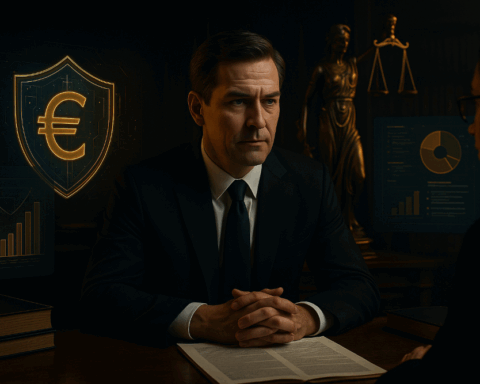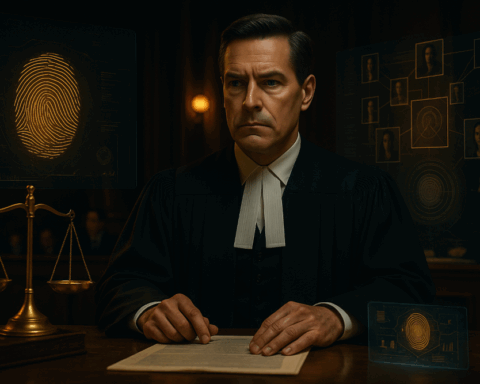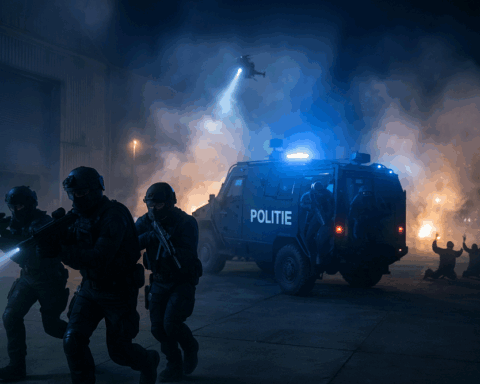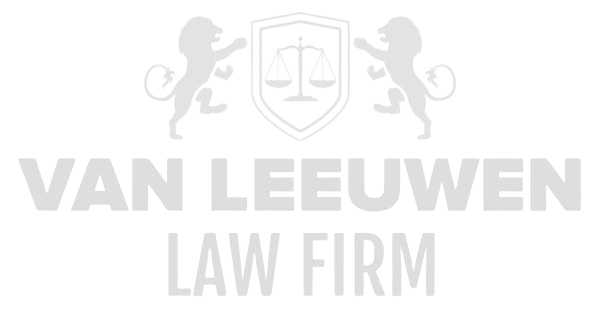The domain of child protection measures extends across a complex legal and societal landscape primarily aimed at safeguarding minors from abuse, neglect, and other forms of serious threats to their development. Within this framework, balancing the individual rights of the child with broader societal interests constitutes a fundamental challenge, as ensuring the safety of youth cannot be considered in isolation from the stability and livability of society as a whole. Child protection measures not only serve pedagogical and educational purposes but also act as instruments through which governmental and judicial authorities intervene in situations where parents or caregivers are temporarily or structurally unable to provide the necessary care and guidance. The legal system is designed so that interventions are proportional, temporary, and aimed at restoring normal upbringing circumstances, while simultaneously preserving the possibility for escalation when necessary in the interests of both the child and public order.
In instances where there is a serious threat to a child’s development or circumstances that could potentially cause harm to the surrounding environment, the role of local authorities assumes unprecedented importance. Mayors, in collaboration with the Child Protection Board and certified family guardians, operate not merely as implementers of judicial decisions but as strategic coordinators of preventive and corrective measures that serve public order, safety, and societal stability. These measures perform a dual function: on one hand, protecting the individual minor from immediate danger, and on the other, mitigating the risks that problematic behavior among youth may pose to neighborhoods, schools, and local communities. In situations of non-compliance by parents or caregivers, children may actually suffer harm, while the same parents can simultaneously face accusations stemming from their failure to provide adequate care. In this interplay of interests and risks, the legal precision of procedures, the integration of preventive policy instruments, and the role of specialized family guardians are crucial in achieving a sustainable balance between individual protection and societal safety.
Legal Framework and Authority
The legal framework for child protection measures is firmly anchored in the Child Protection System and the Child Protection Board Act, which clearly define the powers, procedures, and responsibilities of all involved parties. Since January 1, 2015, the mayor has held an explicit position within this system, allowing them to initiate requests for supervision through the Child Protection Board. This mandate is strictly limited to supervision and does not encompass powers to terminate parental authority or to remove a parent from legal guardianship. The focus is on situations where a minor’s development is seriously threatened, requiring direct intervention to prevent escalation into criminal behavior or societal disruption. The mayor’s role is primarily coordinative and supervisory, allowing decisions of the Board to be submitted to the court for review, thus providing a legal safeguard for the proportionality and necessity of the measure.
The Child Protection Board must submit a file to the court within fourteen days of a supervision request, ensuring that the legal procedure is both rapid and effective. This time-sensitive approach is intended to maintain a preventive character, so that intervention occurs in the child’s life as early as possible before problems escalate and potentially cause harm to the surrounding environment. The legal instruments of child protection are integrated with local prevention and safety measures, enabling at-risk groups and troubled youth to be identified and supported at an early stage. In this context, the mayor acts as a connecting link, coordinating the legal process with municipal policy, police deployment, social workers, and local initiatives aimed at public order and safety, resulting in a coherent and systematic protective network.
The mayor’s authority is explicitly limited to interventions that have a direct impact on the protection of minors and their environment. This implies that all measures must always be proportional and aligned with the goal of restoring normal upbringing circumstances. In cases where the Board reaches a different assessment, the mayor can still request the court to make a decision, providing a legal tool for escalation if necessary to protect both the child and society. The mayor’s positioning within this system emphasizes the interplay between prevention, intervention, and enforcement, carefully monitoring the limits of authority to respect the rule of law while prioritizing societal safety and stability.
Purpose of the Measure
The primary purpose of child protection measures is to safeguard minors from threatening upbringing circumstances, placing the child’s development at the center and preventing escalation into problematic behavior. The measures are designed to create a safe environment in which the child can grow, while preserving family structures as much as possible. This entails temporary supervision and guidance, usually provided by a certified family guardian who plays a connecting role between the child, the parents, and the relevant support services. The intervention is not aimed at punishing parents but at restoring normal upbringing circumstances and ensuring the child’s welfare.
Beyond individual protection, these measures also have a clear societal dimension. Timely intervention in problematic family situations prevents children from later causing disturbances or engaging in criminal behavior. In neighborhoods where youth lack sufficient guidance, the absence of intervention can lead to the undermining of social order and an increased risk of local crime escalation. Measures such as supervision, therefore, have a preventive character that extends beyond the family alone and is directly linked to maintaining public order, safety, and livability.
The structure and oversight provided by child protection measures also serve as instruments for behavioral regulation and societal stability. By creating coherence between social guidance and legal instruments, an environment is fostered in which both the child and the community benefit from the intervention. Temporary measures, such as restraining orders, Damocles measures, or other municipal safety interventions, are often integrated into the broader approach, creating a coherent policy that combines upbringing, security, and public order. Consequently, the measure is always proportional, goal-oriented, and, in extreme cases, may be extended or adapted in accordance with legal necessity and societal interests.
Supervision
Supervision is the central instrument within the system of child protection measures, whereby a court places the child under the care of a certified family guardian. While parents retain their legal authority, the upbringing and behavior of the child are placed under close supervision. The family guardian acts as a guide for both the child and the parents, with the authority to issue binding instructions regarding upbringing, structure, and compliance with agreements. In principle, the child remains at home, but temporary out-of-home placement may occur in cases of overriding interest, always with the goal of restoring normal upbringing and protecting the child.
The initial duration of supervision is set at a maximum of twelve months, with the possibility of extension until the child reaches eighteen years of age if necessary to ensure continuity and protection. This ensures that the measure is both flexible and rigorously safeguarded, with each extension or adjustment requiring judicial justification and motivation. The preventive nature of supervision is primarily aimed at preventing future disturbances or problematic behavior, directly contributing to the protection of the neighborhood and public order.
Collaboration between the family guardian, local youth care institutions, police, schools, and municipal authorities is essential to ensure effective supervision. The guardian continuously monitors compliance with behavioral rules, supports parents and the child in the recovery process, and reports to the court on progress and risks. In this way, a dynamic system of supervision and guidance is established, serving both the child’s welfare and the stability of the environment, where legal and societal interests are aligned.
Initiative and Procedure
The initiative for child protection measures can arise from various sources: municipalities, Safe at Home/AMHK, youth care institutions, and even private citizens can provide signals that prompt the Child Protection Board to conduct an investigation. The Board analyzes the situation, gathers evidence, and compiles a file that serves as the basis for a request for supervision before the court. It is possible for the Board to decide not to pursue a measure, while the mayor may still submit a request for judicial review, providing an additional legal safeguard.
The procedure is structured to allow for rapid assessment in situations where there are imminent risks to the child or the surrounding environment. Transparency and motivation are mandatory, ensuring that all involved parties, including parents and caregivers, fully understand the identified risks and the interventions deemed necessary. The integration of reports from police, schools, neighbors, and support services is a critical component of the information provided to the court.
Within this process, the mayor plays a coordinating role. By submitting files, aligning preventive and safety measures, and supporting the legal process, a coherent policy is created that protects both the child and the community. This ensures that interventions are timely, proportional, and effective, minimizing potential harm to the child and the environment.
Limitations of the Mayor’s Authority
The authority of the mayor within the system of child protection measures is deliberately limited in both scope and execution. Legislation explicitly stipulates that the mayor is only empowered to initiate supervision orders and does not have authority over interventions such as termination of parental authority or removal of parental rights. This delineation is essential to ensure that interventions remain proportional and that the principle of separation of powers is not violated. The mayor thus does not act as a direct provider of family guidance but functions as a coordinator, translating signals from the community into legal procedures and preventive interventions.
This limitation means that the mayor can only act in situations where a minor’s development is at serious risk. The focus is on protection and prevention rather than criminal sanctions or corrective measures outside the legal framework of child protection. Temporary measures are strictly aligned with statutory deadlines, with the Child Protection Board required to present the case to the court within fourteen days. This ensures both the urgency of protection and the necessary legal review are maintained.
Within these limitations, the mayor remains a crucial link in local safety strategies. By intervening early in problematic situations, escalation into criminal behavior or societal disturbances can be prevented. Coordination with other municipal measures, such as restraining orders, neighborhood prevention teams, and youth programs, enhances the effectiveness of supervision orders. This creates a coherent system where the protection of the child, the enforcement of public order, and the stability of the community reinforce one another.
Target Groups and Criteria
Child protection measures primarily focus on minors facing serious developmental threats or problematic family situations. This includes children at increased risk of criminal behavior, public disturbances, or neglect, as well as families where parents are unable or unwilling to provide adequate care and guidance. The selection of target groups is made on a case-by-case basis, carefully weighing the severity of the threat and its impact on both the child and the broader environment.
The child protection system is also aimed at preventive intervention, helping to prevent potential escalation in behavior. By identifying problematic situations early and intervening legally, the welfare of the child is safeguarded while directly contributing to the stability and safety of neighborhoods and schools. These measures are closely linked to local safety policies and serve as a tool against the undermining of public order by youth crime.
Beyond individual criteria, societal interests play a decisive role. Situations that create public disturbances or potential risks to neighbors and other young people are given significant weight when determining whether to initiate a supervision order. This results in a dual function of the measure: protection of the child and protection of the community. Each assessment is tailored to the individual case, requiring careful analysis of family circumstances, behavior, risk factors, and the context of the environment in which the child grows up.
Role of the Family Supervisor
The family supervisor occupies a central role within the system of child protection measures. Following a court-ordered supervision, the supervisor is responsible for guiding the child and parents, overseeing compliance with behavioral agreements, and evaluating the progress of family and parenting processes. The goal is to restore normal conditions within the family, with the supervisor acting as a link between the family, legal authorities, and social support services.
The family supervisor works closely with the municipality, police, schools, and other support agencies to ensure that imposed measures are followed and that risk factors are adequately monitored. Through mandatory oversight, the supervisor can intervene when agreements are not met, and reporting to the court may result in an extension or adjustment of the measure. This mechanism safeguards both the child’s protection and the integrity of the intervention, preventing escalation into disruptive or problematic behavior.
In addition, the family supervisor serves a preventive and advisory function toward parents and institutions. The advisory role extends to further legal steps, integration of social services, and coordination with preventive municipal measures. The ultimate goal is for the child to grow up in a safe, structured, and supervised environment while minimizing societal risks, such as public disorder and undermining caused by problem youth.
Duration and Extension
The initial duration of a supervision order is legally set at a maximum of twelve months, with the court having the authority to extend the period, always with a maximum of one year per extension. The length of the measure depends on the child’s progress, family circumstances, and the assessed risk of negative outcomes for the child or the environment. The principle of proportionality is strictly applied: each extension must be necessary and justified, with prior review by the court.
Continuity in protection and guidance is a key consideration when deciding on extensions. By continuously reassessing the measure, it is ensured that the intervention remains both relevant and goal-oriented, and that the child is not kept under supervision longer than strictly necessary. Coordination with care providers, municipalities, and other involved agencies is essential to maintain a coherent protection network.
Furthermore, the legal structuring of duration and extensions is crucial. It ensures that interventions are not arbitrary but based on a balanced analysis of risks, child development, and societal interests. Extensions are therefore instrumental not only for individual protection but also for maintaining public order and preventing escalation in problematic youth behavior, thereby serving a broader societal interest.
Rights of Parents and the Child
Within the framework of child protection measures, parents fundamentally retain their legal authority over their minor child, even when a supervision order is imposed. Parental authority is not revoked, but its exercise is guided and monitored by a certified family guardian. This means that both parents and the child are required to comply with the instructions of the family guardian, with the aim of stabilizing the parenting situation and ensuring the child’s development. This obligation is supervised by the court, providing a legal framework for compliance and resolving potential disputes.
The rights of the child are also explicitly safeguarded. The child is entitled to clear information regarding the nature, duration, and objectives of the measure, as well as protection of personal privacy. The child’s developmental stage, understanding, and emotional capacity are taken into account to ensure that the intervention is not only legally justified but also pedagogically appropriate. In cases of disagreement or dissatisfaction, the child may lodge an objection with the court, ensuring legal protection and the possibility of judicial review.
Moreover, the rights of both parents and the child are closely linked to cooperation among the relevant agencies. Evaluation of progress, adherence to agreements, and potential adjustment of measures occur in consultation with social workers, schools, and local safety services. Temporary restrictions on parental autonomy are permitted only when strictly necessary and proportionate, with the goal of returning the family to a normal situation. This combination of rights and obligations provides a fundamental safeguard against arbitrariness while simultaneously enhancing the effectiveness of the intervention for both the child and the wider community.
Relationship with Public Order and Safety
Child protection measures have a direct connection to the maintenance of public order and safety, as problematic behavior among youth often poses risks to neighborhoods, schools, and society at large. Preventing disturbances and juvenile delinquency is therefore closely aligned with the objectives of supervision orders and other interventions. By intervening early in families with at-risk children, not only is personal development protected, but the livability and safety of the local community are also ensured.
These measures are systematically integrated with preventive and corrective municipal policies, creating a coordinated approach in which the police, child protection agencies, youth care institutions, and municipalities collaborate. Preventive strategies, such as neighborhood-focused interventions, exclusion orders, or educational programs for youth, are combined with the legal tools of child protection to prevent escalation into criminal behavior. The role of the mayor as coordinator of this system is critical, as the mayor oversees the effectiveness of measures and ensures alignment with local safety policies.
The functional integration of child protection and public order extends to supervision of compliance and behavioral regulation. By employing certified family guardians and continuous monitoring, it is ensured that interventions not only protect the child but also work preventively against societal risks. In this context, a dynamic and strategic system is established in which legal, social, and safety interests are aligned, making child protection measures an integral instrument in combating undermining, disturbances, and juvenile delinquency.









